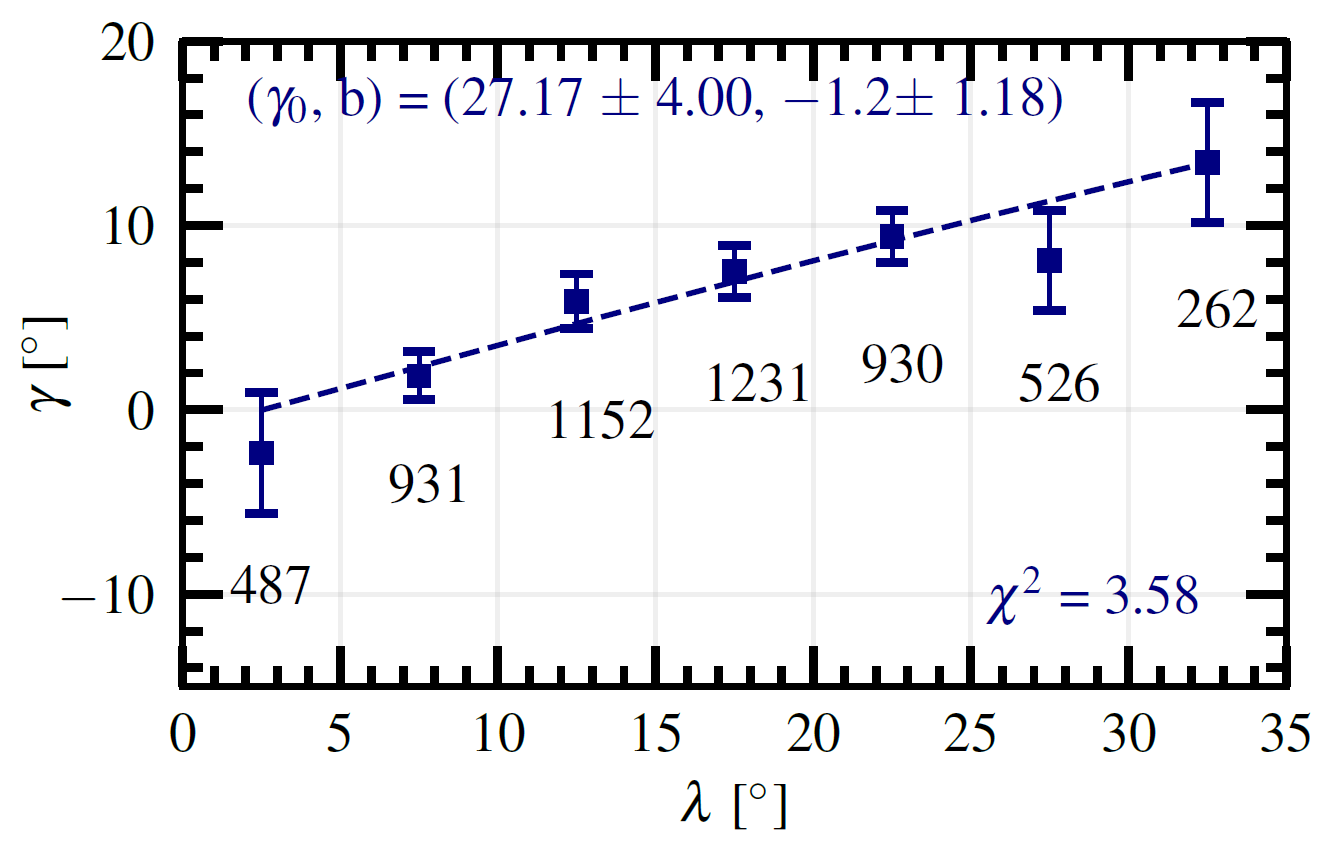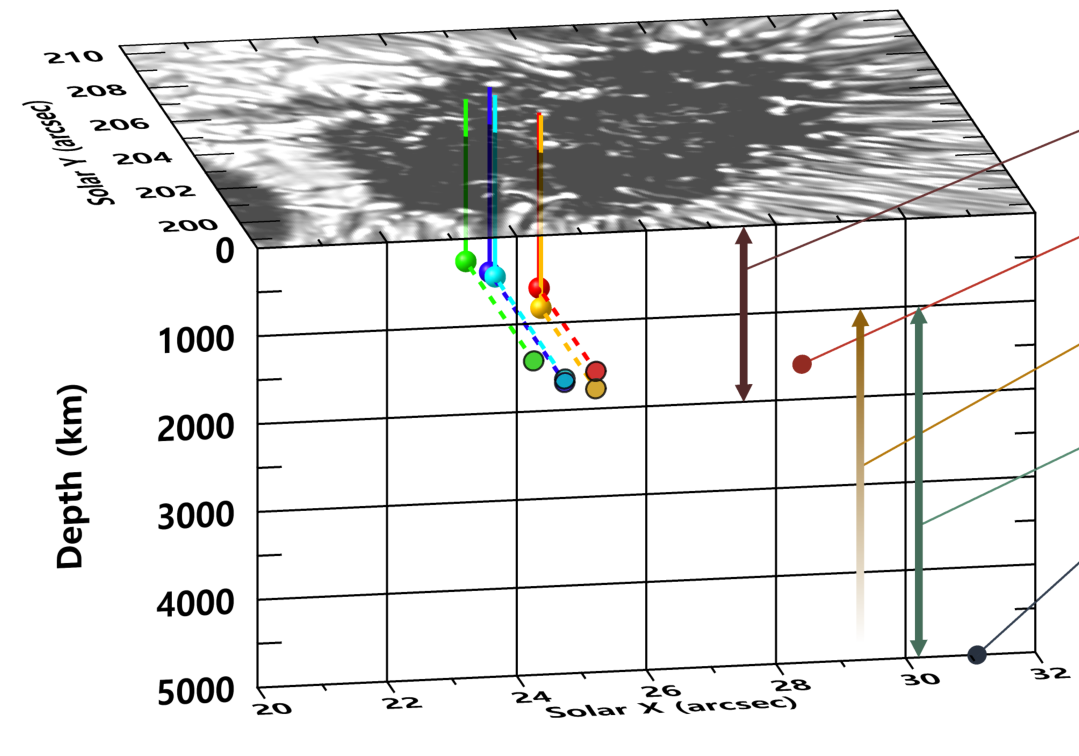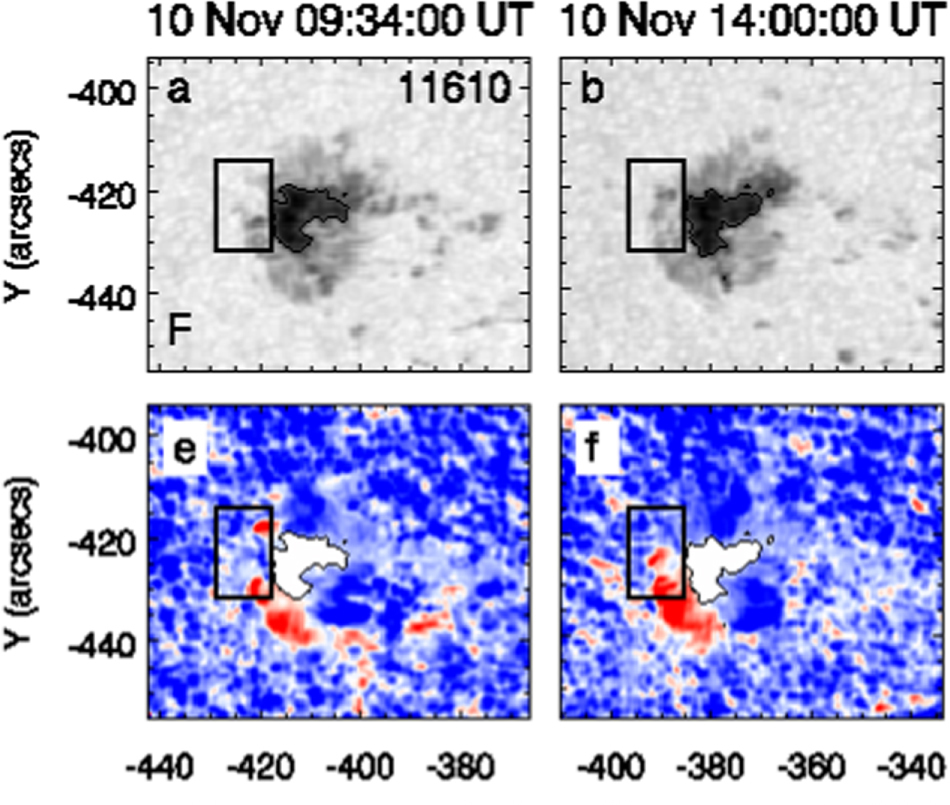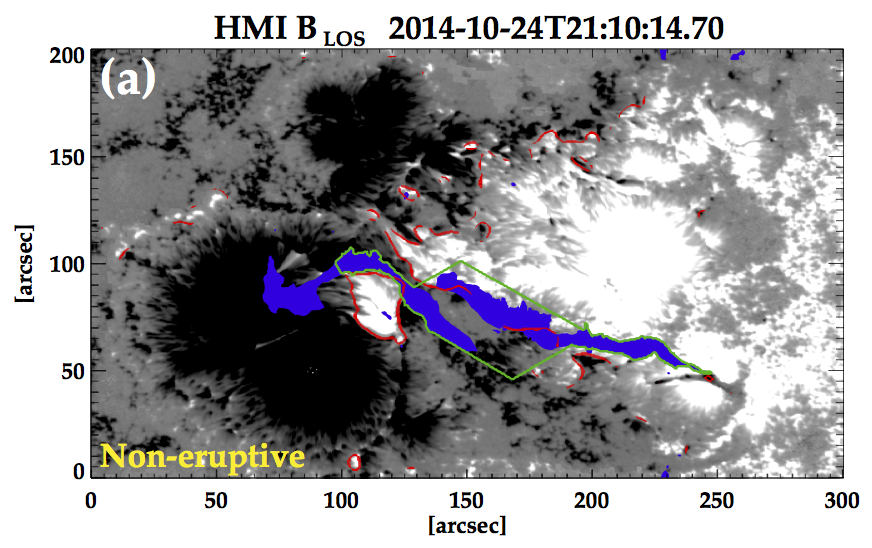Category Archives: sunspots
200. Extraordinary Magnetic Flux Emergence Rate Preceding the May 2024 Extreme Geomagnetic Disturbances
184. Measuring the Compactness of Active Regions
141. Source Depth of Three-minute Umbral Oscillations
93. Formation of Penumbra in A Sample of Active Regions Observed by the SDO Satellite
90. A Comparative Study of the Eruptive and Non-Eruptive Flares Produced by the Largest Active Region of Solar Cycle 24
AR12192, the largest active region in Solar Cycle 24, produced 6 X-class flares, but none of them were associated with a CME. However, a much weaker flare, of M4.0-class, was associated with a CME. Magnetic field and morphological changes are analyzed during these flares to understand why this is the case.
75. Comparison of Helioseismic Far-side Active Region Detections with STEREO Far-Side EUV Observations of Solar Activity
70. Magnetic Flux Emergence & Decay Rates for Sunspots Observed with HMI
We quantify the emergence and decay rates of ten bipolar active regions using vector magnetic field data from HMI. Our results, placed in context with other observational and modeling results in the literature, confirm a trend that higher flux regions emerge faster and the rate is dependent on the total flux of that region.








